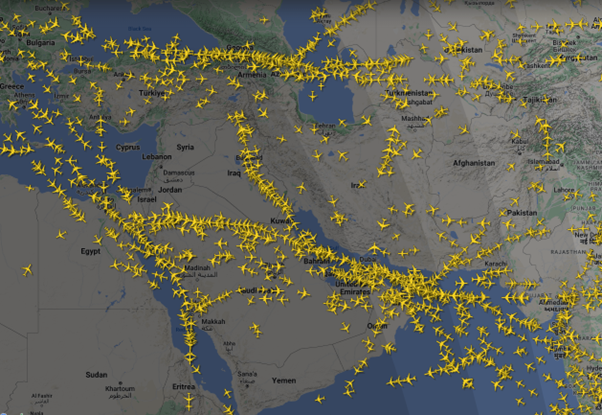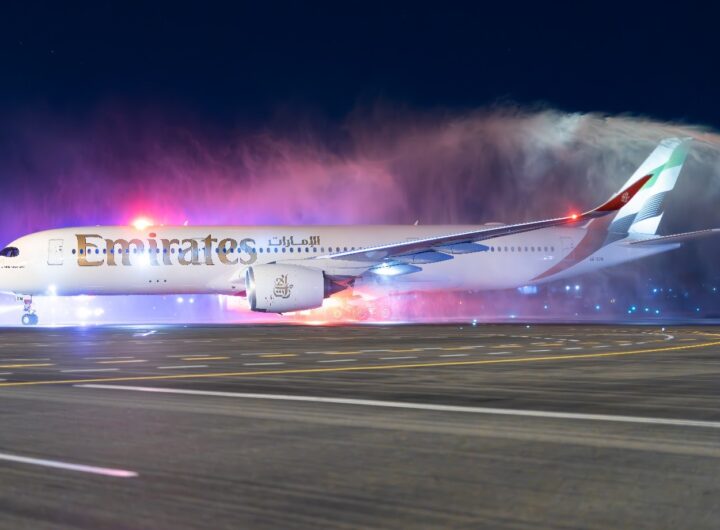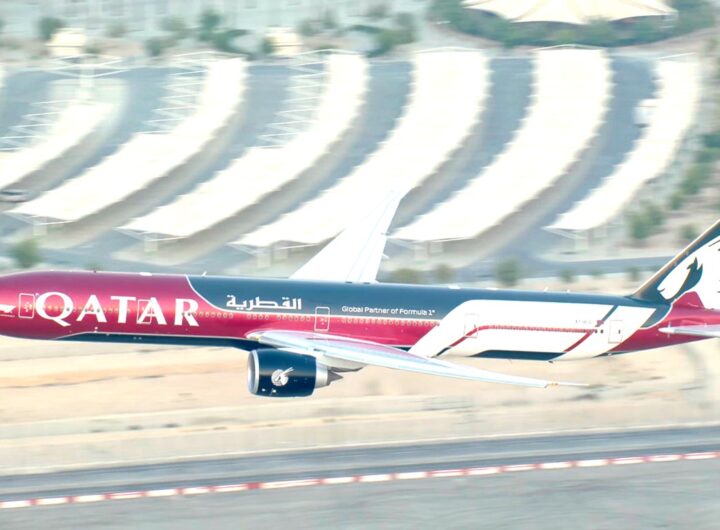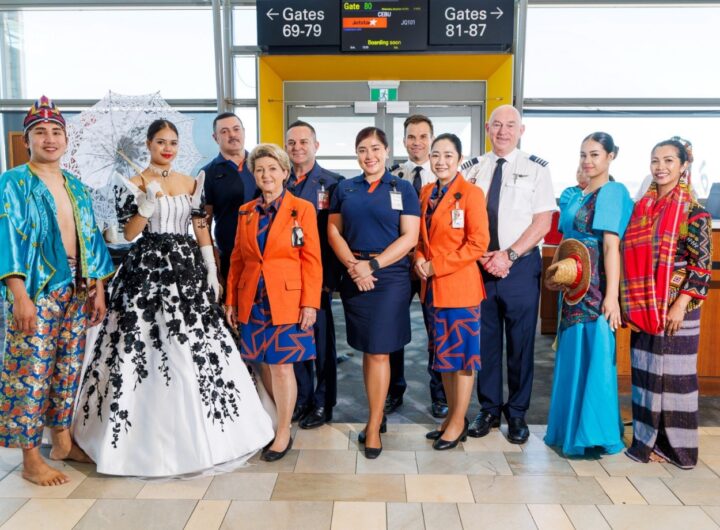
Image: Flightradar24,com
In the wake of escalating tensions in the Middle East, the aviation industry faces a precarious situation as airlines navigate the complexities of regional airspace. Following a series of reciprocal strikes between Israel and Iran on April 19, Iran’s decision to temporarily close its airspace has had a ripple effect across the sector.
Despite the temporary closure of Iran’s airspace, the aviation industry has demonstrated its preparedness and commitment to passenger safety. In a proactive move, several airlines have chosen to maintain a detour, prioritizing the safety of passengers and assets. This cautious approach reflects the industry’s heightened awareness of the risks associated with flying over conflict zones.
Amidst the general trend of avoidance, it’s important to note that not all carriers have altered their routes. Emirates A380 flights between Dubai International Airport and Moscow Domodedovo International Airport have been observed traversing Iranian airspace, as reported by flightradar24. This decision underscores the varied responses among airlines to the ongoing situation, providing a comprehensive view of the strategies adopted.
The media reported that Iran had shut down key airports in Tehran, Shiraz, and Isfahan following the attacks. The swift closure led Flydubai to cancel all flights scheduled for the subsequent Friday, illustrating the immediate impact on airline operations.
The conflict has extended beyond Iran’s borders, prompting several nations to close their skies due to the threat posed by Iranian drone, cruise missile, and ballistic missile attacks. The European Union Aviation Safety Agency (EASA) has issued advisories to EU-based airlines, urging caution when flying near the airspace of Iran, Israel, and neighbouring countries.
The EASA’s warning, issued on April 14 in response to Iran’s barrage of rockets and drones into Israel, remains in effect. Airlines are advised to exercise vigilance within the airspace and within a 100-nautical-mile radius (approximately 185 kilometres), highlighting the ongoing concerns for aviation safety in the region.
As the situation evolves, the aviation industry remains on high alert, with each airline assessing the risks and making decisions that align with their safety protocols. The conflict’s impact on air travel underscores the interconnected nature of global aviation and the need for constant vigilance in the face of geopolitical unrest.
 Star Alliance Named World’s Leading Airline Alliance for 2025 at World Travel Awards
Star Alliance Named World’s Leading Airline Alliance for 2025 at World Travel Awards  Emirates Ends 2025 on a High with Five World Travel Awards and Over 20 Global Honours
Emirates Ends 2025 on a High with Five World Travel Awards and Over 20 Global Honours  Qantas Unveils New Auckland International Lounge Ahead of Holiday Rush
Qantas Unveils New Auckland International Lounge Ahead of Holiday Rush  Emirates A350 Debuts in Adelaide with New Premium Economy, Boosting Connectivity and Comfort to Dubai
Emirates A350 Debuts in Adelaide with New Premium Economy, Boosting Connectivity and Comfort to Dubai  Qatar Airways’ New Formula 1 Livery Takes Off: Swizz Beatz–Designed Boeing 777 Tours the World After Qatar Grand Prix Debut
Qatar Airways’ New Formula 1 Livery Takes Off: Swizz Beatz–Designed Boeing 777 Tours the World After Qatar Grand Prix Debut  Jetstar Launches First Direct Brisbane–Cebu Flights: New Gateway from Queensland to One of the Philippines’ Most Beautiful Islands
Jetstar Launches First Direct Brisbane–Cebu Flights: New Gateway from Queensland to One of the Philippines’ Most Beautiful Islands  Stray Nomad 2025: A Year in Review
Stray Nomad 2025: A Year in Review  Crystal Serenity Unveils 2028 Amazon, Caribbean and Azores Voyages
Crystal Serenity Unveils 2028 Amazon, Caribbean and Azores Voyages  Explora Journeys and Hilton Unite for a New Era of Luxury Ocean Travel with Launch of Hilton Honors Adventures
Explora Journeys and Hilton Unite for a New Era of Luxury Ocean Travel with Launch of Hilton Honors Adventures 